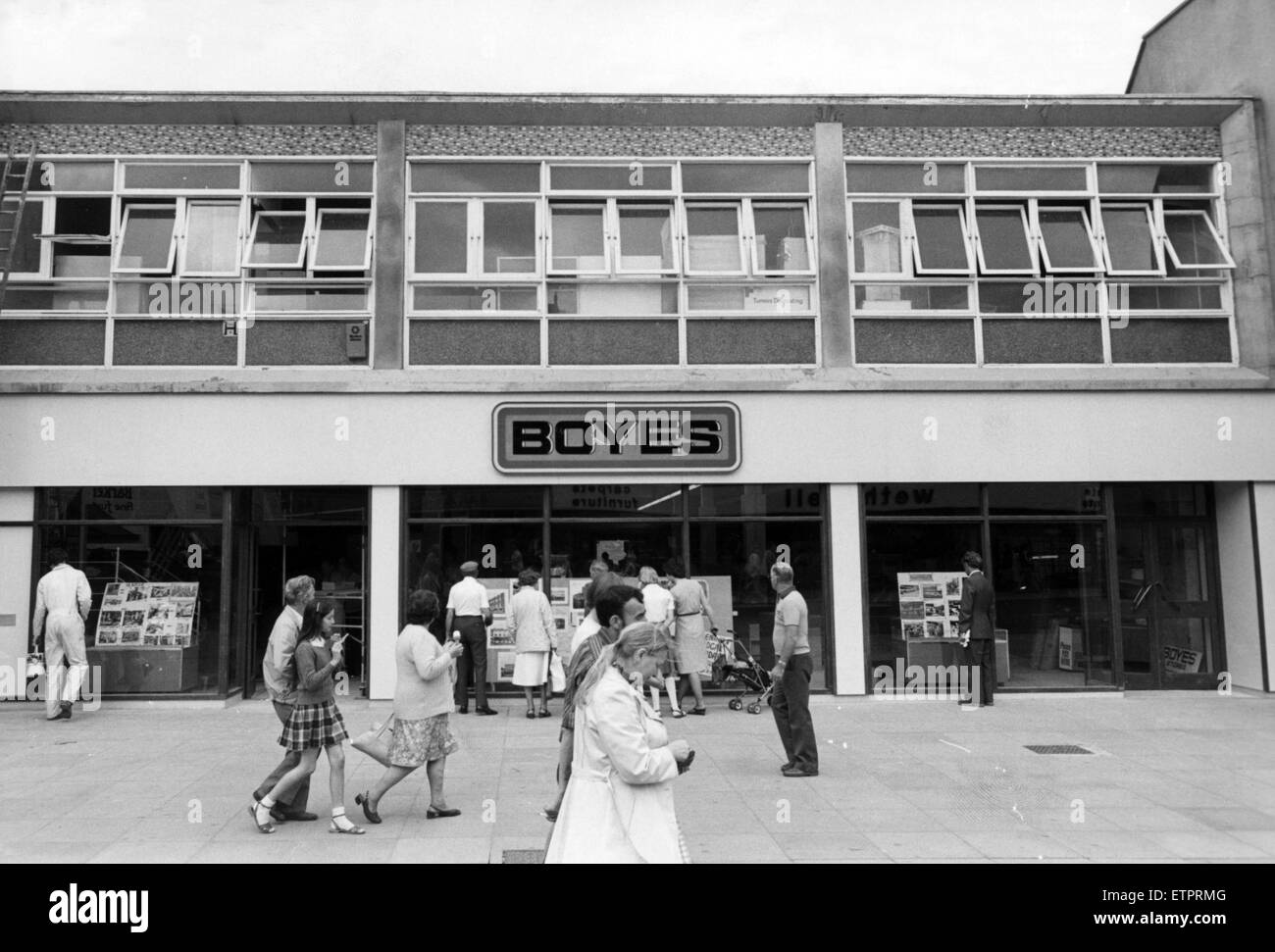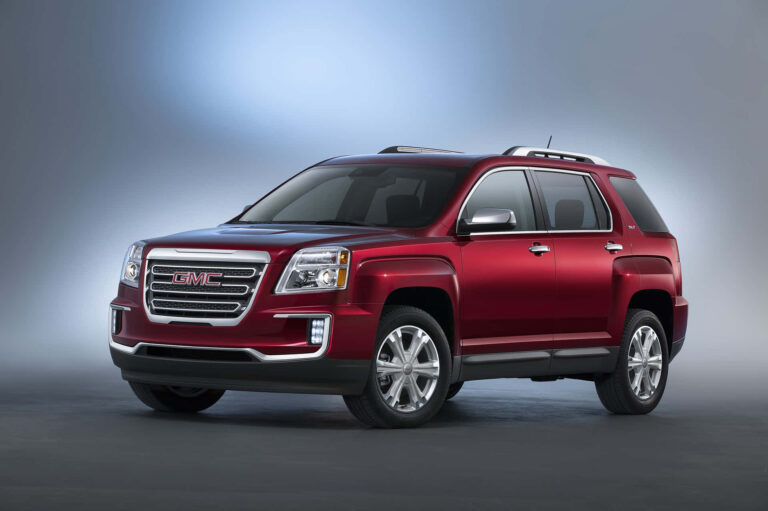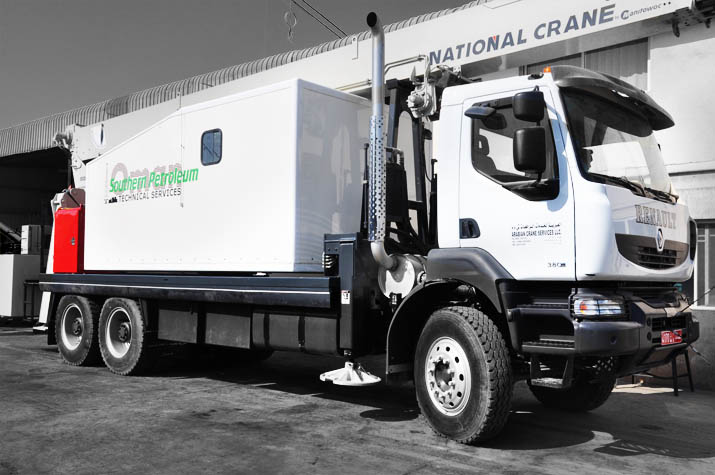New Cab Chassis Trucks For Sale: Your Foundation for Business Success
New Cab Chassis Trucks For Sale: Your Foundation for Business Success cars.truckstrend.com
In the dynamic world of commercial vehicles, few options offer the versatility and customization potential of a new cab chassis truck. Far more than just a bare frame, these robust machines serve as the ultimate blank canvas, allowing businesses and individuals to create purpose-built vehicles tailored precisely to their operational needs. Whether you’re a landscaper needing a dump body, a contractor requiring a service body, a delivery service optimizing for cargo, or a municipality building a specialized utility vehicle, understanding the ins and outs of new cab chassis trucks is the first step towards acquiring the perfect workhorse.
This comprehensive guide will delve into what a cab chassis truck is, why it might be the ideal choice for your next acquisition, the critical factors to consider during purchase, the different types available, and how to navigate the essential upfitting process to transform a basic chassis into a fully functional asset.
New Cab Chassis Trucks For Sale: Your Foundation for Business Success
What Exactly is a Cab Chassis Truck?
At its core, a "cab chassis" truck is a commercial vehicle sold without a pre-installed rear body. It comprises the complete front end – including the driver’s cab (with seats, controls, and dashboard), engine, transmission, front and rear axles, wheels, and tires – mounted on a bare, heavy-duty frame (the chassis rails). Essentially, it’s the skeletal structure of a truck, ready to be equipped with a specialized body or equipment specific to its intended application.
Unlike a standard pickup truck or a pre-configured box truck, a cab chassis offers unparalleled flexibility. It provides the robust mechanicals and a safe, comfortable operating environment, while leaving the crucial decision of the rear configuration entirely up to the buyer. This modular approach is what makes cab chassis trucks indispensable across a vast array of industries.
Why Choose a New Cab Chassis? The Undeniable Benefits
Opting for a new cab chassis truck over a used model or a pre-built vehicle offers a multitude of advantages that can significantly impact your operational efficiency, safety, and long-term financial health:
- Unmatched Customization: This is the primary draw. A new cab chassis allows you to select the exact body type, dimensions, and features required for your specific tasks, ensuring optimal functionality and maximizing payload capacity.
- Latest Technology & Efficiency: New models come equipped with the most current engine technologies, often resulting in improved fuel economy, lower emissions, and enhanced power output. You also benefit from advanced safety features (ADAS), infotainment systems, and telematics capabilities.
- Full Manufacturer Warranty: Peace of mind is invaluable. A new truck comes with a comprehensive factory warranty covering major components, significantly reducing unexpected repair costs in the initial years of ownership.
- Reliability & Longevity: With no prior wear and tear, a new chassis provides a fresh start, promising a longer operational life and fewer maintenance issues, translating to less downtime and greater productivity.
- Resale Value: Well-maintained new trucks generally hold their value better than used ones, offering a stronger return on investment should you decide to upgrade in the future.
- Safety & Compliance: Newer vehicles are designed to meet the latest safety standards and emissions regulations, ensuring your fleet remains compliant and your operators are protected.


Key Considerations When Buying a New Cab Chassis
Purchasing a cab chassis is a significant investment that requires careful planning. Here are the critical factors to evaluate before making your decision:
- Gross Vehicle Weight Rating (GVWR) & Gross Combined Weight Rating (GCWR): This is paramount. GVWR is the maximum permissible weight of the fully loaded vehicle (chassis + body + cargo + passengers). GCWR is the maximum weight of the loaded vehicle plus any trailer it might be towing. You must accurately calculate the weight of your intended body, typical cargo, and any towed equipment to ensure the chassis you select can safely and legally handle the load. Overloading is dangerous and illegal.
- Engine Type & Performance:

- Gasoline: Often lower initial cost, quieter, and suitable for lighter duty cycles or less frequent long-distance travel.
- Diesel: Higher torque for heavy loads, better fuel economy (especially under load), and longer engine life, ideal for continuous heavy-duty work and towing. Consider horsepower and torque ratings based on your application.
- Transmission:
- Automatic: Easier to drive, especially in stop-and-go traffic, and reduces driver fatigue.
- Manual: Offers more control and can be more fuel-efficient in some scenarios, though less common in modern commercial vehicles.
- Cab Style:
- Regular Cab: Single row of seating, typically 2-3 passengers, maximizes frame length for body.
- Extended Cab: Small rear seating area, suitable for occasional extra passengers or secure interior storage.
- Crew Cab: Full rear seating, accommodating 5-6 passengers comfortably, ideal for work crews.
- Wheelbase & Frame Length: The distance between the front and rear axles (wheelbase) and the overall length of the frame are crucial for accommodating your chosen body. Ensure there’s sufficient "Cab-to-Axle" (CA) and "Cab-to-End of Frame" (CE) measurements.
- Axle Ratio: This affects performance and fuel economy. A "higher" numerical ratio (e.g., 4.88) provides more pulling power but lower top speed and fuel economy. A "lower" numerical ratio (e.g., 3.55) offers better fuel economy at highway speeds but less torque for heavy hauling.
- Power Take-Off (PTO) Capability: If your application requires hydraulic power for a dump body, crane, or other equipment, ensure the chassis is equipped with a PTO or can be easily upfitted with one.
- Safety Features: Modern cab chassis trucks offer advanced driver-assistance systems (ADAS) like automatic emergency braking, lane-keeping assist, adaptive cruise control, and stability control, enhancing safety for your drivers and others on the road.
- Manufacturer & Dealer Support: Choose a reputable manufacturer with a strong dealer network for service, parts, and warranty support.
Types and Categories of New Cab Chassis Trucks
Cab chassis trucks are broadly categorized by their Gross Vehicle Weight Rating (GVWR), which dictates their capabilities and typical applications:
-
Light-Duty Cab Chassis (Class 1-3, GVWR up to 14,000 lbs):
- Examples: Ford F-250/350/450 Chassis Cab, Ram 2500/3500/4500 Chassis Cab, Chevrolet Silverado/GMC Sierra 2500/3500/4500 Chassis Cab.
- Typical Applications: Landscaping, light construction, utility services, plumbers, electricians, delivery vans (with box bodies), small flatbeds, basic service bodies.
- Key Features: Often share components with consumer pickup trucks but with stronger frames and suspension for commercial use. Available in gasoline and lighter diesel options.
-
Medium-Duty Cab Chassis (Class 4-6, GVWR 14,001 – 26,000 lbs):
- Examples: Ford F-450/550/600/650/750 Chassis Cab, Ram 4500/5500 Chassis Cab, Hino 195/238/268, Isuzu N-Series (NPR, NQR, NRR), Fuso Canter.
- Typical Applications: Heavier service bodies, larger flatbeds, small dump trucks, box trucks, municipal vehicles, tow trucks, tree care, refrigeration units.
- Key Features: Built specifically for commercial use, offering more robust powertrains, higher payload capacities, and a wider range of wheelbase options. Often come with diesel engines.
-
Heavy-Duty Cab Chassis (Class 7-8, GVWR 26,001 lbs and up):
- Examples: Freightliner M2, Peterbilt 337, Kenworth T270/T370, International MV/HV Series, Volvo VHD, Mack Granite.
- Typical Applications: Large dump trucks, refuse haulers, concrete mixers, fire apparatus, heavy-duty wreckers, specialized vocational vehicles, tractor-trailer foundations.
- Key Features: Designed for the most demanding applications, offering powerful diesel engines, multiple axle configurations, and highly customizable frames to handle extreme loads and specialized equipment.
The Upfitting Process: From Chassis to Complete Vehicle
Once you’ve selected your new cab chassis, the journey isn’t over – it’s just beginning. The "upfitting" process is where your vision truly comes to life.
- Define Your Body Needs: This involves choosing the type of body (e.g., flatbed, dump body, service body, box truck, wrecker, utility, specialized custom build), its dimensions, material (steel, aluminum), and any specific features (toolboxes, cranes, liftgates, shelving, lighting).
- Select an Upfitter: This is a crucial step. Work with a reputable and experienced upfitter who specializes in the type of body you need. They will ensure the body is properly mounted, wired, and integrated with the chassis, adhering to all safety and regulatory standards. Look for certifications, positive reviews, and a strong portfolio.
- Compliance and Regulations: Your upfitter should be knowledgeable about federal and state regulations concerning vehicle weight distribution, lighting, safety features, and overall vehicle dimensions. Proper upfitting ensures your vehicle is legal and safe for operation.
- Coordination: A good dealer will often work directly with your chosen upfitter, streamlining the process and ensuring the chassis is delivered with the necessary preparatory options (e.g., wiring harnesses, frame reinforcements) for the intended body.
Tips for a Successful New Cab Chassis Purchase
- Thorough Needs Assessment: Before you even look at a truck, precisely define what the truck will do, what it will carry, how far it will travel, and how many people it needs to transport.
- Calculate Total Cost of Ownership (TCO): Look beyond the sticker price. Factor in fuel costs, insurance, maintenance, potential downtime, and resale value. Diesel trucks, while more expensive upfront, often have lower TCO over their lifespan due to better fuel economy and durability.
- Test Drive (if possible): While you can’t test drive with your specific body, try to drive a similar chassis or a complete truck built on the same chassis to get a feel for its handling, braking, and cab comfort.
- Negotiate Wisely: Don’t be afraid to negotiate the price, financing terms, and any additional features or services.
- Understand Warranty Details: Know exactly what’s covered, for how long, and any conditions that might void the warranty.
- Plan for Upfitting Lead Times: Custom bodies take time to build and install. Factor this into your operational planning.
Potential Challenges and Solutions
- High Initial Cost: New cab chassis trucks represent a significant investment.
- Solution: Explore financing options through the dealership, commercial lenders, or leasing programs. Consider tax incentives for commercial vehicle purchases (e.g., Section 179 deduction in the US).
- Complexity of Selection: Matching the right chassis to the right body can be overwhelming.
- Solution: Consult with experienced commercial truck dealerships and professional upfitters. They have the expertise to guide you through GVWR calculations, wheelbase considerations, and body compatibility.
- Long Lead Times: Especially for custom upfits, waiting for your completed truck can impact operations.
- Solution: Plan well in advance. Order your chassis and schedule your upfitter months before you anticipate needing the vehicle.
- Finding a Reputable Upfitter: Not all upfitters are equal.
- Solution: Ask for references, check industry certifications (e.g., NTEA), and review their past work. Ensure they are insured and bonded.
New Cab Chassis Trucks For Sale: Estimated Price Guide (2024)
Prices for new cab chassis trucks vary significantly based on manufacturer, class, engine type, transmission, cab configuration, wheelbase, and optional features. The table below provides estimated base price ranges for the chassis only, excluding the cost of the custom body or upfitting. These figures are subject to change based on market conditions, supply, and specific dealer pricing.
| Vehicle Class / Type | Example Models (Chassis Only) | Estimated Base Price Range (USD) | Typical GVWR Range (lbs) | Key Features / Notes | Common Applications |
|---|---|---|---|---|---|
| Light-Duty (Class 2-3) | Ford F-350/450, Ram 3500/4500, Chevy Silverado 3500/4500 | $40,000 – $70,000+ | 10,000 – 14,000 | Gasoline & light diesel options; single/crew cabs; adaptable for smaller bodies; often built on pickup platforms. | Landscaping, plumbing, electrical, small utility, delivery, light towing, basic service bodies. |
| Medium-Duty (Class 4-5) | Ford F-550/600, Ram 5500, Hino 195, Isuzu NPR, Fuso Canter | $60,000 – $100,000+ | 14,001 – 19,500 | Stronger frames & axles; primarily diesel engines; wider range of wheelbases; designed for continuous commercial use. | Heavier service bodies, medium box trucks, small dump trucks, refrigeration units, tow trucks, municipal vehicles. |
| Medium-Duty (Class 6) | Ford F-650/750, Hino 268/338, Isuzu FTR/FV, International MV Series | $80,000 – $150,000+ | 19,501 – 26,000 | More powerful diesel engines; air brakes common; increased payload capacity; ideal for vocational applications just under CDL requirement. | Medium dump trucks, larger box trucks, specialized utility, refuse collection, beverage delivery, fire apparatus (smaller). |
| Heavy-Duty (Class 7-8) | Freightliner M2/SD, Peterbilt 337/348, Kenworth T270/T370, International HV Series | $120,000 – $250,000+ | 26,001 – 33,000+ (Class 7), 33,001+ (Class 8) | Robust components, high horsepower/torque diesel engines, multiple axle configurations, air ride suspension options; built for extreme duty. | Large dump trucks, concrete mixers, refuse haulers, heavy-duty wreckers, fire trucks, specialized vocational equipment. |
Note: These are estimates for the base chassis only and do not include the cost of the body, upfitting, taxes, or dealer fees. Prices can vary significantly based on specific configurations and market demand.
Frequently Asked Questions (FAQ) About New Cab Chassis Trucks For Sale
Q1: What’s the fundamental difference between a pickup truck and a cab chassis truck?
A1: A pickup truck comes from the factory with a fixed cargo bed. A cab chassis truck comes with just the cab and frame rails, allowing for the installation of a specialized, custom-designed body (e.g., a dump body, service body, box, or flatbed) to meet specific commercial needs.
Q2: Can I buy a cab chassis and build my own body for it?
A2: While technically possible, it’s highly recommended to work with a professional upfitter. They have the expertise, equipment, and knowledge of safety standards and regulations (like weight distribution, lighting, and mounting points) to ensure the body is safely and legally integrated with the chassis. DIY upfitting can lead to safety hazards, legal issues, and voided warranties.
Q3: How long does it typically take to get a new cab chassis truck ready for work?
A3: The timeline varies. Ordering the chassis from the factory can take weeks to several months, depending on manufacturer backlog and customization. The upfitting process (building and installing the custom body) can add another few weeks to several months, depending on the complexity of the body and the upfitter’s schedule. It’s wise to plan several months in advance.
Q4: What is GVWR and why is it so important?
A4: GVWR stands for Gross Vehicle Weight Rating. It’s the maximum operating weight of the truck as determined by the manufacturer, including the weight of the chassis, fuel, fluids, driver, passengers, body, and cargo. It’s crucial because exceeding the GVWR is illegal, unsafe, can damage the vehicle, and will void warranties. Always choose a chassis with a GVWR that comfortably accommodates your total anticipated loaded weight.
Q5: Is financing available for new cab chassis trucks?
A5: Yes, most commercial truck dealerships and financial institutions offer various financing options, including loans and leases. Options can vary based on your creditworthiness, business history, and the total cost of the vehicle.
Q6: What are the main advantages of a diesel engine over a gasoline engine in a cab chassis?
A6: Diesel engines generally offer higher torque, which is crucial for hauling heavy loads and towing. They also tend to be more fuel-efficient, especially under heavy load, and are designed for longer lifespans with proper maintenance, making them ideal for high-mileage or heavy-duty applications. However, diesel trucks typically have a higher upfront cost and more complex emissions systems.
Conclusion
New cab chassis trucks are the backbone of countless businesses, offering an unparalleled blend of power, durability, and customization. They represent a significant investment, but one that, when chosen wisely, can yield substantial returns in efficiency, productivity, and longevity. By understanding the core aspects of these versatile vehicles – from their fundamental definition and benefits to the critical purchasing considerations, diverse categories, and the essential upfitting process – you are well-equipped to make an informed decision. With careful planning and the right partners, your new cab chassis truck will serve as a robust and reliable foundation, driving your business forward for years to come.






